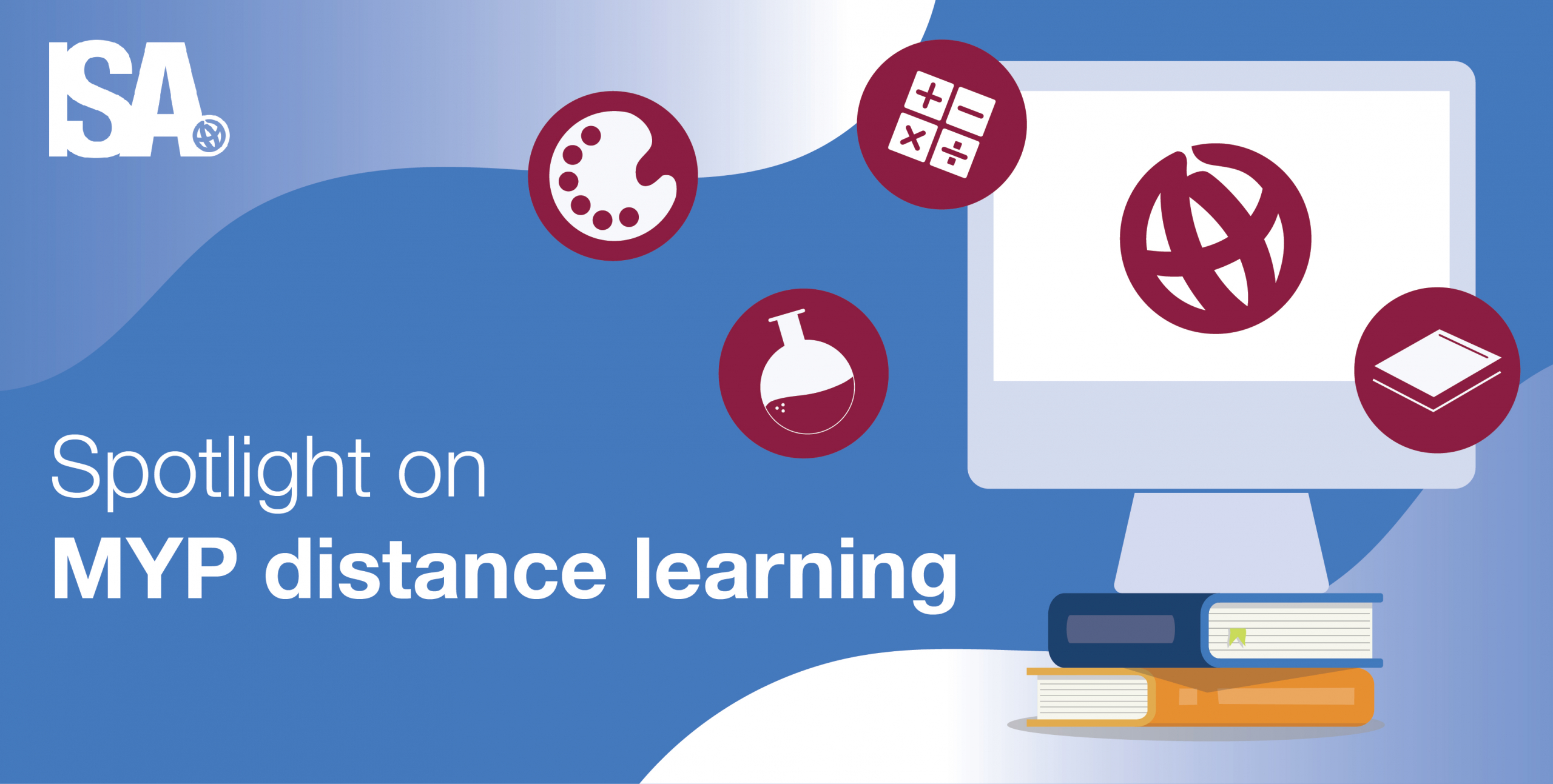Although students are busy and engaged with distance learning at home, it can sometimes be challenging for a parent to know what is going on in their child’s virtual classroom. ISA’s new MYP Coordinator, Douglas Beam, wanted to reassure parents that despite the challenging circumstances, both students and teachers are continuing to learn together and engage with each other. Therefore, in an effort to share some of the exciting things that are happening in distance learning, he created a spotlight series on the MYP classroom so that parents could get a real understanding of some of the many exciting learning experiences in our various MYP classrooms. This second volume of the Spotlight on the MYP Virtual Classroom (vol. 2) includes some information for all Upper School students and parents about distance learning expectations. Additionally, there are some interesting learning engagements happening in classes throughout the upper school. Please take a few moments to have a look.
Students respond to distance learning in different ways. Some students are enjoying the opportunity to learn from home while others are missing the social interactions that come from being in the school building. Each student has an opportunity every day to work on developing important skills such as:
- self-regulation
- learning “how to learn”
- adaptability
- Flexibility
- “tech-savviness”.
Teachers in the Upper School continue to refine and deepen our approaches to teaching in distance learning. In order to help ensure effective teaching and learning practices, please have a conversation with your child about the distance learning expectations for students in the virtual classroom.
Upper School Student Expectations for Distance Learning
Many of the behaviours that are conducive to learning during face-to-face instruction in the classroom are also helpful during distance learning. In an effort to create a respectful and supportive learning environment, students are expected to adhere to the following:
Getting Started
- Have breakfast before the start of your first class of the day.
- Be punctual to class.
- Be seated upright at a desk or table. Students should not be in bed. Beds are for
- sleeping, not learning during school.
- Please be dressed just like you are expected to be dressed for school.
Computer-ready
- Mute your mic if you are not actively talking (most of us are pretty good at this
- already).
- Please be ready to answer questions (turning your mic on and off) when a teacher
- calls on you.
- Your camera should be on at all times unless your teacher tells you otherwise.
- You may never record or take screenshots of other students or teachers.
When in Class
- Communicate proactively with your teachers if you cannot meet deadlines or require
- additional support – always ask when in doubt.
- Be active in class – collaborate and support your peers in learning environments (eg.
- Breakout rooms).
- Regularly monitor your online platforms (Email, Veracross, Google Meet, Google
- Classrooms etc.) to check for announcements and feedback from your teachers.
- Use a headset during direct instruction lessons if background noise is a potential
- disturbance.
- During instruction time only use the ‘chat’ feature for lesson related dialogue.
Taking care
- Use your breaks and lunchtime wisely. Try to disengage from your laptop/computer
- screen and seek some fresh air.
- If you are struggling with organizational skills let your homeroom/advisory teacher (or
- your subject teacher) know, they will have simple and effective solutions for you!
- Be your own advocate – don’t “suffer in silence”.
What’s Happening in the Virtual Classroom
With curiosity and determination, the English classes in grade 7 have managed to plan, craft, and edit their first full essays of the year. Students have been receiving support from their teacher, Ms. Jessica Williams, during distance learning to plan and revise their essays. They have produced work that demonstrates a solid understanding of the essay structure and the novel The Outsiders.
In grade 9 Science, teachers have adapted a criteria B & C investigation so that the students can complete it at home, away from computer screens. The unit focuses on the rates of chemical reactions. Students are designing a method to test the impact of one factor on the rate of reaction between hydrochloric acid and calcium carbonate. To make this work at home, students add Alka Seltzer tablets to water, which results in the same type of chemical reaction as they would have experienced in school, but with safer chemicals. Students are working in groups during synchronous classes reviewing and assessing an example criterion B lab report and receiving guidance from teachers. Teachers are also meeting with students to answer questions and give feedback on their in-progress work. During asynchronous lessons, students should be off their devices, carrying out their experiment and collecting data.
Students in grade 10 have recently completed the Personal Project, and their work is now on display in a virtual exhibition. The Personal Project is the culminating project of the Middle Years Programme. The project offers the students opportunities to apply the content knowledge and skills they’ve learned in their courses during the five-year programme as well as the approaches to learning (ATL) skills practised throughout all IB programmes: communication, social, research, self-management and thinking skills. Throughout the process, the students are supported by a supervisor, the US library team, the grade 10 advisory teachers and the MYP coordinator. To access the exhibition, please go to the Veracross portal and scroll down and click on the green Upper School Pages button. Then scroll to the Grade 10 Personal Projects button.
Resources
- For more information about accessing the Veracross portal, please visit the resources on this Site.
- For some information about tech tools that can help students get organized, click here.
- Much of the research in online teaching and learning come from higher education, here is an article intended for higher education students with many adaptable ideas for students in the Upper School.



